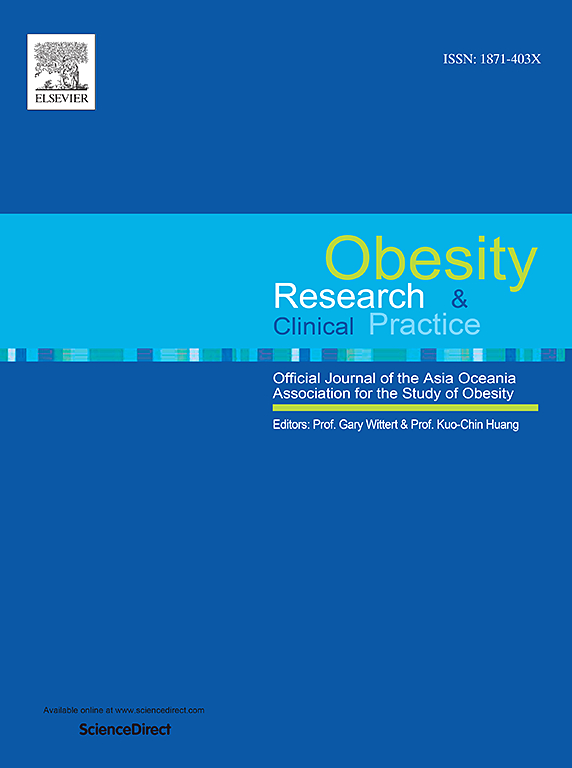通过外显子组测序调查早发性肥胖的遗传变异:一项回顾性队列研究。
IF 2.5
4区 医学
Q3 ENDOCRINOLOGY & METABOLISM
引用次数: 0
摘要
目的:本研究旨在检查诊断为早发性肥胖的儿童的临床数据并分析外显子组测序(ES)结果。方法:我们筛选患有严重(体重指数-标准差评分bbbb3)和早发性(结果:32例患者(35.5% %)在肥胖相关通路中具有一个或多个突变,所有这些突变都是杂合的,具有两个以上肥胖相关变异的患者更肥胖。该队列包括29种不同于我们研究人群的新突变,7种先前报道的致病变异,2例单亲二体和1例线粒体热点突变。SH2B1基因的变异在我们的研究群体中成为肥胖的普遍遗传决定因素,占病例的16.6% %。统计评估显示两组在人口统计学属性上无显著差异。结论:外显子组测序被证明是发现儿童早发性肥胖的新变异和扩大突变谱的有效方法。同时,进一步的体外和体内功能研究对于阐明这些变异对肥胖发病机制的贡献至关重要。本文章由计算机程序翻译,如有差异,请以英文原文为准。
Investigating genetic variants in early-onset obesity through exome sequencing: A retrospective cohort study
Objective
This study aimed to examine clinical data and analyze exome sequencing (ES) findings in children diagnosed with early-onset obesity.
Methods
We screened children presenting with severe (body mass index-standard deviation score >3) and early-onset (<7 years) obesity using ES. Participants were categorized into either the "no variant identified" group or the "variant identified" group, facilitating the exploration of correlations between clinical-demographic characteristics and genetic mutations linked to early-onset obesity. The functional implications of identified variants were assessed through in silico analyses.
Results
Of the patients, 32 (35.5 %) possessed one or more mutations in pathways associated with obesity, all of which were heterozygous and patients with more than two obesity-associated variants were more obese. This cohort included 29 novel mutations distinct to our study population, 7 previously reported pathogenic variants, two instances of uniparental disomy, and one mitochondrial hotspot mutation. Variants in the SH2B1 gene emerged as a prevalent genetic determinant of obesity within our group, accounting for 16.6 % of cases. Statistical evaluations showed no significant differences in demographic attributes between the two groups.
Conclusion
Exome sequencing proves to be an instrumental approach for uncovering new variants and broadening the spectrum of mutations in early-onset obesity among children. Concurrently, further functional studies, both in vitro and in vivo, are crucial to elucidate the contributions of these variants to obesity's pathogenesis.
求助全文
通过发布文献求助,成功后即可免费获取论文全文。
去求助
来源期刊

Obesity research & clinical practice
医学-内分泌学与代谢
CiteScore
7.10
自引率
0.00%
发文量
80
审稿时长
49 days
期刊介绍:
The aim of Obesity Research & Clinical Practice (ORCP) is to publish high quality clinical and basic research relating to the epidemiology, mechanism, complications and treatment of obesity and the complication of obesity. Studies relating to the Asia Oceania region are particularly welcome, given the increasing burden of obesity in Asia Pacific, compounded by specific regional population-based and genetic issues, and the devastating personal and economic consequences. The journal aims to expose health care practitioners, clinical researchers, basic scientists, epidemiologists, and public health officials in the region to all areas of obesity research and practice. In addition to original research the ORCP publishes reviews, patient reports, short communications, and letters to the editor (including comments on published papers). The proceedings and abstracts of the Annual Meeting of the Asia Oceania Association for the Study of Obesity is published as a supplement each year.
 求助内容:
求助内容: 应助结果提醒方式:
应助结果提醒方式:


